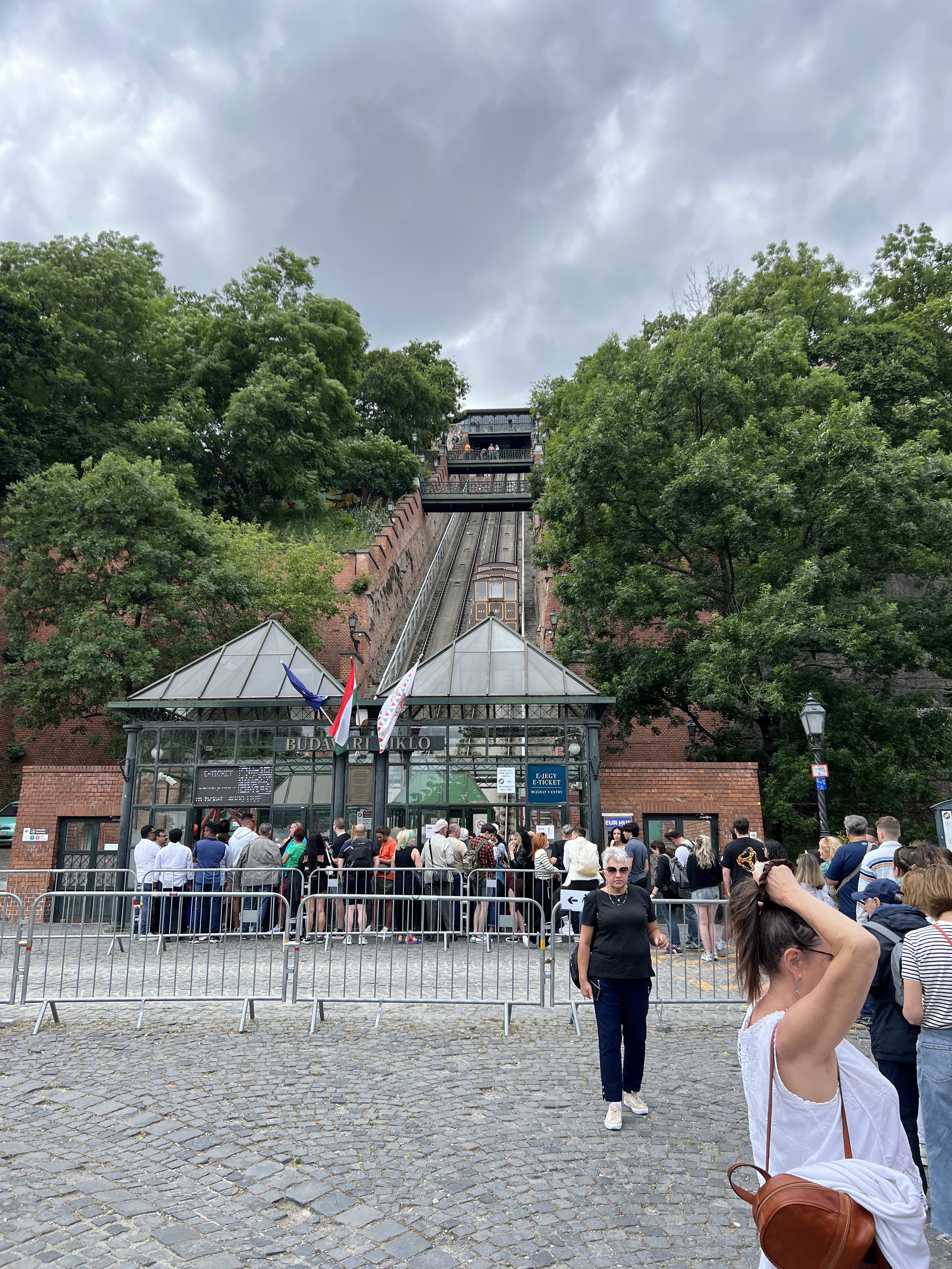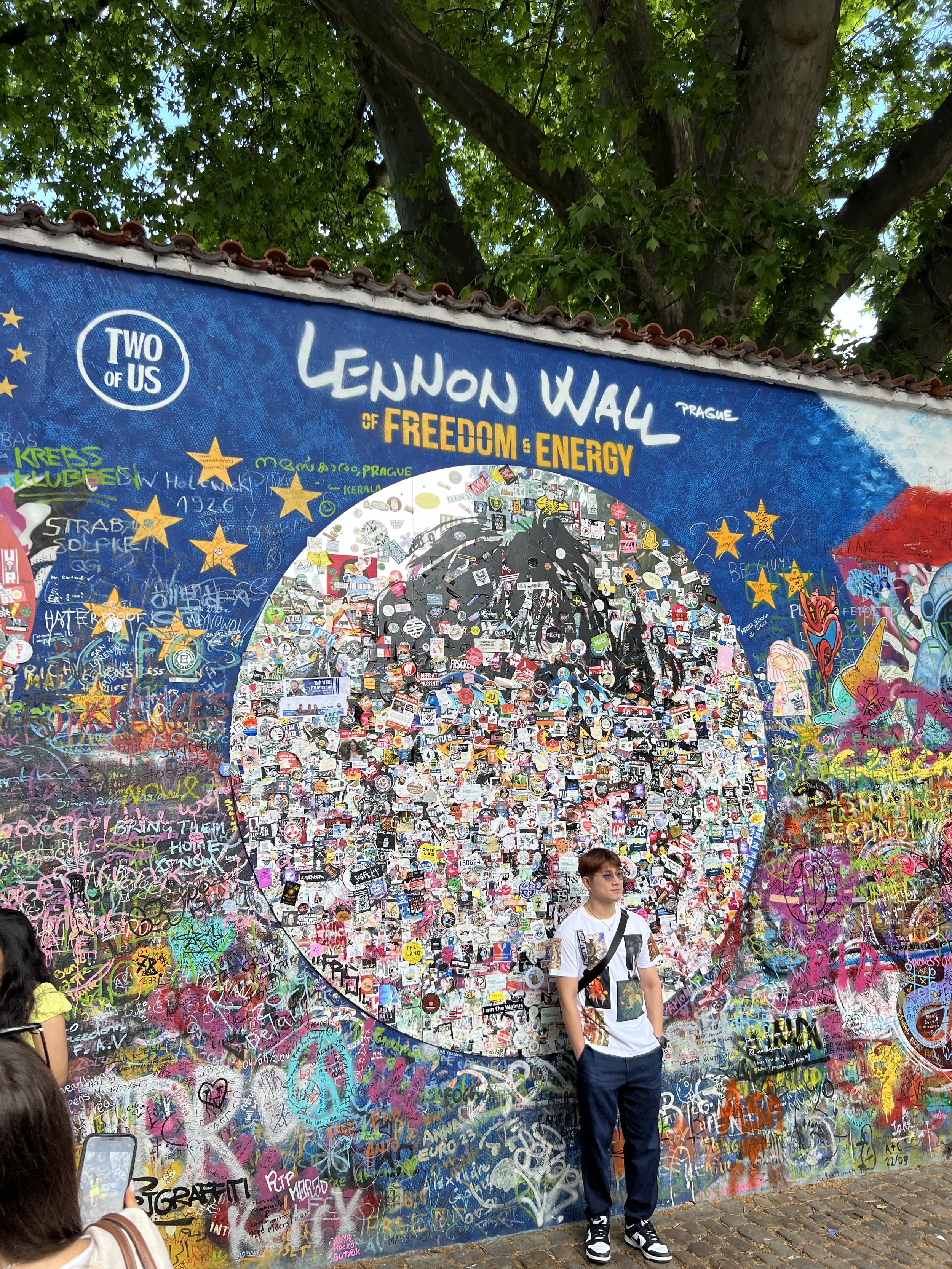From the Danube to the Baltic: my slow train trip through Central Europe
There’s a particular kind of magic to travelling by train — that slow, cinematic unfolding of landscapes, where time stretches and the world reveals itself one station at a time. Maybe it’s the rhythm of the rails, or the strange intimacy of watching strangers’ towns slip past your window. I grew up on long train rides from Brussels across France, Austria and Germany, and somewhere between the snack car and the border checks I fell in love with that feeling of movement with purpose.
So last May, I finally stitched together the European route I’d been daydreaming about for years — Budapest to Copenhagen via a string of cities that each hum with their own tempo. It wasn’t about racing through, or dutifully ticking off sights — it was about tracing the quiet connective tissue of Europe, one track at a time.
1 | Budapest: grand, gritty and full of steam
There’s something about Budapest that makes you feel like you’ve stepped into a novel – perhaps it’s the faded grandeur of the buildings, or the way the Danube splits the city into the hilly calm of Buda and the buzz of Pest. Start up at Buda Castle – you can walk or take the funicular – and wander the cobbled streets around Fisherman’s Bastion. The views are worth lingering over. Cross the river to visit the Hungarian Parliament building – enormous, Gothic Revival, and best seen from across the water with a coffee in hand.
Don’t skip the thermal baths – Széchenyi is the most famous with its outdoor pools and serious chess players, but Gellért has lovely Art Nouveau tiling and a quieter feel. In the evening, head for a ‘ruin bar’ – abandoned buildings turned into bars, full of mismatched furniture and good energy. Szimpla Kert is the most iconic, but there are plenty of others tucked away in District VII.
2 | Vienna: elegant and very well-fed
Vienna feels a little more composed – the sort of city where the trams glide silently and the coffee comes with a glass of water and a sense of ceremony. The museums here are serious business: the Kunsthistorisches Museum is grand and glorious, while the Leopold Museum focuses more on Austrian modernists like Egon Schiele and Klimt. MuseumQuartier is the cluster to head for, especially if you’re keen on art and a good coffee between galleries.
Stop in at a traditional coffeehouse – Café Central is famous but can be busy, so try Café Sperl or Café Hawelka for something slightly less polished. And make time for the Prater, especially if you want a spin on the old Ferris wheel. At sunset, grab a drink along the Danube Canal where pop-up bars and graffiti line the waterfront.
3 | Prague: gothic, golden, and slightly surreal
Prague is full of spires, stories, and a bit of the surreal. Start in the Old Town, with its Astronomical Clock and the cobbled square where musicians and street performers do their thing. Cross the Charles Bridge early – the light is good and the crowds fewer – and explore the castle complex on the other side. It’s a whole world up there, with St Vitus Cathedral at its heart and views across red rooftops.
Just down the hill is the Lennon Wall – a graffiti-covered mural that keeps changing and reflects the city’s rebellious spirit. If you’re in the mood for more art, pop into the Kampa Museum – contemporary and set right by the river. And if you want to see the weirder side of the city, look out for the David Černý sculptures scattered about – they’re odd, amusing and very Prague.
4 | Dresden: baroque beauty with a contemporary twist
Dresden is often overlooked, but it’s well worth the stop. Much of the old town was flattened during WWII and painstakingly rebuilt, so you’ll see stunning baroque architecture that feels both historic and fresh. The Frauenkirche is a standout – rebuilt from the original stones, it’s both a symbol of resilience and a beautiful place to visit.
The Zwinger Palace is another baroque masterpiece, with its elaborate pavilions and peaceful inner courtyard. Inside you’ll find a collection of Old Masters, including works by Rembrandt and Raphael. But Dresden isn’t all about the past – cross the river into the Neustadt for a younger, more creative vibe with independent shops, bars, and street art tucked around every corner.
5 | Berlin: big, bold, and beautifully complex
Berlin is a city that wears its history on its sleeve – sometimes uncomfortably, always honestly. Start at the East Side Gallery, a long stretch of the Berlin Wall now covered in murals, and follow it with a visit to the Jewish Holocaust Memorial – stark, moving, and impossible to forget. The Brandenburg Gate and the Reichstag are nearby, both essential stops on any Berlin first-timer’s list.
Museum Island is where you’ll find the city’s cultural heavyweights – the Pergamon Museum, the Neues Museum – but just as compelling is Berlin’s contemporary art scene, scattered across former factories and squats. In the evenings, head to Kreuzberg or Neukölln for food, drinks and the feeling that anything could happen. Berlin is never boring.
6 | Hamburg: water, warehouses and alternative vibes
Hamburg’s soul lies with the water – the Elbe river, the vast port, and the canals that crisscross the city. The Speicherstadt is the world’s largest warehouse complex, all red brick and iron bridges, now home to coffee roasters, mini museums and the mesmerising Miniatur Wunderland (more fun than it sounds). Nearby, the Elbphilharmonie concert hall rises like a glass wave – it’s worth going up for the views even if you’re not catching a concert.
Wander through the Altstadt (Old Town), and then head for Sternschanze or St Pauli if you want to see the city’s more alternative side. There’s a bit of punk rock history, dive bars, and small indie shops to poke your nose into. And don’t miss the Sunday morning Fischmarkt if you’re up early (or still awake) – it’s loud, lively, and very Hamburg.
7 | Copenhagen: design, hygge, and harbour swims
Copenhagen is the perfect final stop – laid back, stylish, and full of places that make you want to linger. Start at Nyhavn, the colourful harbour with tall old houses and plenty of spots for a drink. From there, it’s a short stroll to Rosenborg Castle with its dreamy gardens and crown jewels.
Climb the Round Tower (Rundetårn) – there’s no staircase, just a gently sloping ramp – and reward yourself with a cinnamon bun at one of the city’s excellent bakeries. Tivoli Gardens is worth a visit too, especially in the evening when the lights come on and it all feels slightly nostalgic. For a more local vibe, rent a bike and cycle out to Refshaleøen – industrial edges, food trucks, and floating saunas on the water.
By the time the train rolled into Copenhagen, the rhythm of the rails had settled somewhere in my bones. The journey had become less about where I was going and more about the quiet, continuous act of getting there… of watching Europe pass by in a thousand small moments: a church spire at dusk, a station café filled with chatter, the fleeting smile of someone on the next platform. Travelling by train has a way of reminding you that distance isn’t something to conquer but to inhabit – and that sometimes, the best part of a trip is the space in between.
Here’s the practical bit about the train journeys
Embarking on a train journey from Budapest to Copenhagen offers a rich tapestry of cultures, landscapes, and experiences. To help you visualise and plan this adventure, here are some resources featuring route maps and additional information for each leg of your trip:
Budapest to Vienna
The route from Budapest to Vienna is well-traveled, with frequent services connecting these two historic capitals. For a detailed map and schedule, refer to Eurail’s European Railway Map.
Vienna to Prague
Traveling from Vienna to Prague by train offers scenic views and comfortable service. Detailed maps and ticket information can be found on Seat61’s guide.
Prague to Dresden
The journey from Prague to Dresden is picturesque, following the course of the Elbe River. For route maps and travel details, consult Eurail’s resources.
Dresden to Berlin
Traveling from Dresden to Berlin is straightforward, with frequent trains connecting the two cities. For maps and schedules, refer to Eurail’s Germany by Train guide.
Berlin to Hamburg
The route from Berlin to Hamburg is a major corridor in Germany’s rail network. Detailed maps and travel times are available on Eurail’s Germany by Train page.
Hamburg to Copenhagen
Traveling from Hamburg to Copenhagen involves a comfortable train journey, crossing over a number of picturesque bridges. For route maps and schedules, consult Eurail’s European Railway Map.
For comprehensive planning, Eurail’s interactive map provides an overview of train routes across Europe, including the cities on your itinerary. Additionally, Seat61 offers detailed guides on international train travel from Budapest and Vienna, which can assist in planning connections and understanding ticket options.
Please note that train schedules and routes can change, so it’s advisable to check the latest information and make reservations where necessary before embarking on your journey.












































